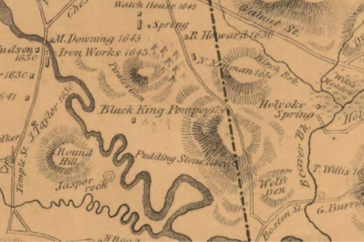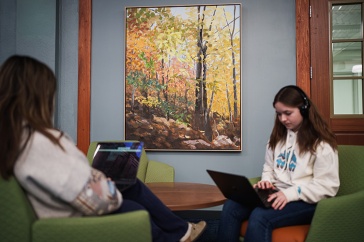The inside of the railway car was cramped. Some 26-feet long, 7-feet high, and almost 9-feet wide, it was barely big enough for Curtis White '16, who stood alone inside the car on display at the United States Holocaust Memorial Museum last November.
He thought about the pictures he’d seen earlier that semester in professor Jeffry Diefendorf’s classroom of the railway cars the Nazis used to transport European Jews and others to the death camps during the Holocaust. He thought about how dozens of people were herded into each car until it was packed to bursting. They had no food, no water, no sanitary provisions. The doors were sealed; in the winter, the prisoners inside froze, and in the summer, they sweltered.

White pictured himself among the captives, the empty car suddenly, painfully, full. He imagined the weight of the Nazi machine bearing down on him, a nation and an ideology committed to his destruction. Alone in the boxcar, he wondered what it might have been like to be stripped of his humanity, to be marked for death.
He lingered inside the railcar for a few moments more and then walked out into a hall.
“I felt emotionally beat-up,” he says. “It was as if I’d been punched in the heart.”

White’s experience at the museum was due in part to Diefendorf, who encourages his students to visit the museum and see first-hand the Holocaust’s toll and the evil ideology that made it possible. But the trip itself was made possible thanks to a gift to the university from Gordon and Nancy Vickers '77.

White’s revelation was something of an echo of an experience Gordon Vickers had as a child. He was 12 years old and delivered the New York Times each morning in his Nashua, N.H. neighborhood. On his route were Dan and Clara Sklar; one weekend, they asked him to deliver their Sunday edition of the Times last. When he did, they shared their story.
“They were both concentration camp survivors,” Gordon says. “Dan and Clara had tattoos — they were numbers in the concentration camp.”
Gordon Vickers was stunned. He knew about the Holocaust from history class in school, but he didn’t know anyone who’d directly experienced it. Seeing the Sklars's tattoos and hearing what they experienced in the camp was revelatory. Even now, he chokes up when talking about it.
“It was just shocking to me, how people could be treated like cattle,” he says. “And the real question is, how do we stop that from happening again?”
For Gordon, education is the answer. Classes like Diefendorf’s, augmented with a visit to the museum, make history personal and encourage people to speak up and oppose hatred and injustice.
“When I was young, the Holocaust was still fresh in people’s minds,” Gordon says. “But now, subsequent generations have kind of lost track of it. And we’ve got to keep this in mind, because it’s still going on.”
Diefendorf agrees. When European Jews were sent to the concentration camps, the Nazis confiscated their belongings — suitcases, eyeglasses, shoes, everything — and sent the items back to Germany, where they were given to soldiers and their families. It’s one thing to show students a photo of one of Auschwitz’s storage areas during a lecture, Diefendorf says. It’s another to see in person a display of those confiscated items.
“It provides an emotional response you just don’t get in class,” he says.
Holocaust survivors and their descendants often visit the museum, and during one of his own trips, Diefendorf recalls standing next to an elderly woman as she looked at a photo. “She pointed to a man in the photo and said, ‘That’s the person who saved my mother,’” he says.
The museum helps establish those personal connections. It fosters in students like White profound moments of empathy and serves as a stark reminder that the roots of the Holocaust — anti-Semitism, racism and institutionalized bigotry of all stripes — continue to plague every nation.
“We’re grateful the university has given us this opportunity to reconnect with UNH on a personal level. It’s very rewarding,” Nancy Vickers says.
Though his day at the museum was intense, White is happy he went. A 27-year-old senior and member of the Air National Guard, White says his awareness has grown. He has a heightened sense of discrimination and intolerance and a better understanding of how a group of people can be stripped of their humanity and made into an “other” because of their race, ethnicity or anything else that sets them apart. And, most importantly, Diefendorf’s class and the trip to the museum have given him the courage to speak up when he comes face to face with hatred.
“It’s given me a bigger heart,” he says.
Originally published by:
The College Letter, the newsletter of the UNH College of Liberal Arts
-
Written By:
Larry Clow '12G | UNH Cooperative Extension

















































